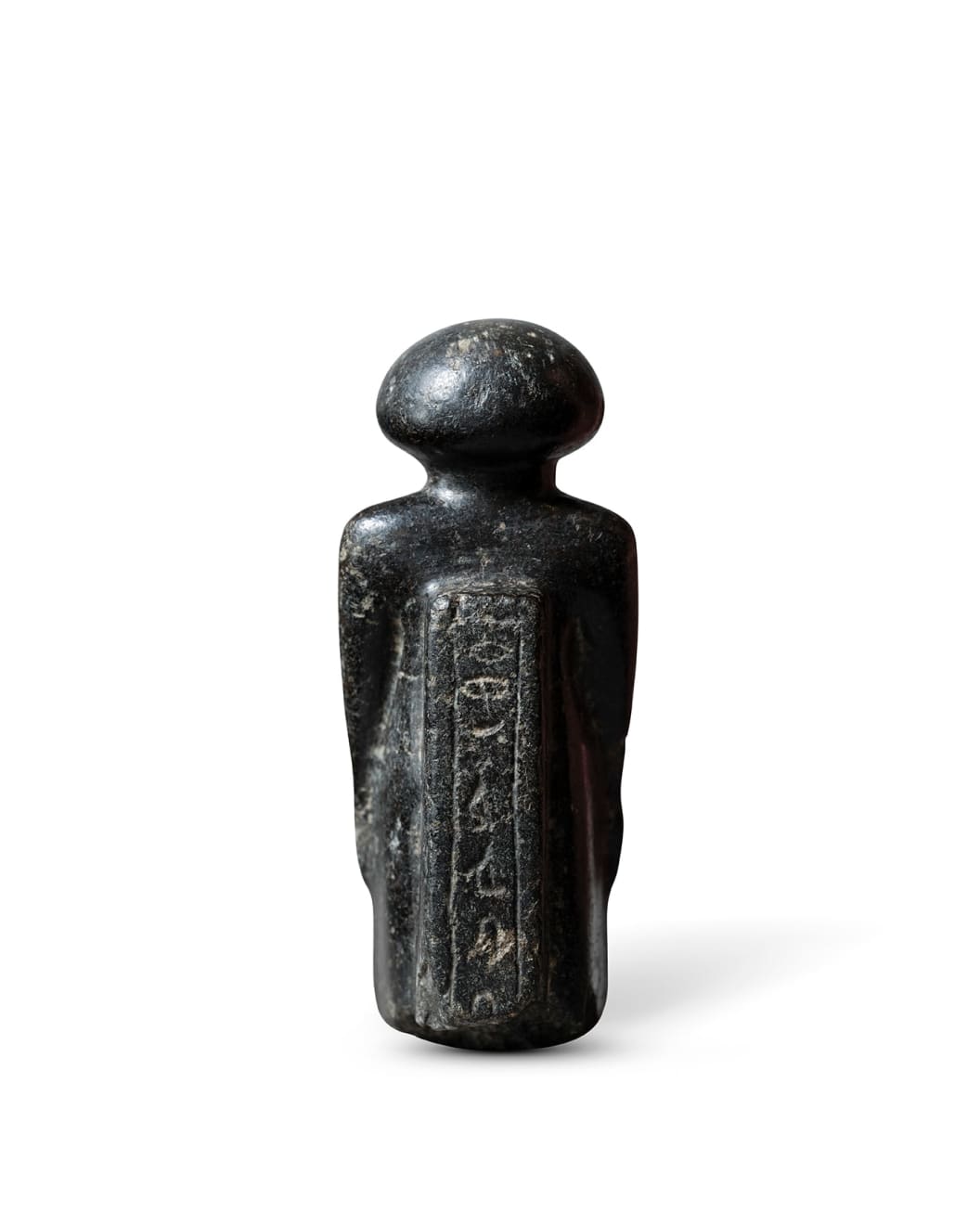Egyptian
An Egyptian black stone figure of an official, Kumes, Middle Kingdom to Second Intermediate Period, circa 2055 - 1550 BC
Serpentine or steatite
Height: 13.3 cm
Further images
The male figure standing frontally, clad in a voluminous wrap-over kilt, with sharp vertical pleats in the corners, tied just below the breast leaving the upper torso nude with fleshy...
The male figure standing frontally, clad in a voluminous wrap-over kilt, with sharp vertical pleats in the corners, tied just below the breast leaving the upper torso nude with fleshy pectorals. With broad shoulders, his long arms held at his sides with the palms of his hands resting on his garment. Wearing a smooth thick wig obscuring his ears, his oval face tapering to a rounded chin, with a broad nose, full lips, and large almond eyes. With a back pillar behind inscribed with hieroglyphic text giving the name 'Kumes' and an archaic administrative title ‘Mouth of Nekhen’. It is thought that people with this title were commissioners of the bureau of the vizier.
Provenance
European collection, late 19th to early 20th century, based on the patinaEnglish private collection, West Country, believed to have been acquired in the mid-20th century, thence by descent
Literature
Male figures wearing these long, high-waisted kilts were first introduced during the 12th Dynasty and the figures with hands flat against kilts in the later Middle Kingdom. The long kilt indicates that the subject of this statue is a person of some stature. The placement of the hands on the front of the kilt is typical of the later Middle Kingdom.
Similar statues were placed in tombs and in temples during the Middle Kingdom and into the Second Intermediate Period, but this small statue probably comes from a tomb. For a related example see Swansea W847:
J. Malek, D. Magee, and E. Miles, Topographical Bibliography of Ancient Egyptian Hieroglyphic Texts, Statues, Reliefs and Paintings, VIII, Objects of Provenance Not Known, Part 1. Royal Statues. Private Statues (Predynastic to Dynasty XVII) Oxford: Griffith Institute, 1999, 331. For further discussion see J. Bourriau, Pharaohs and Mortals, Egyptian Art in the Middle Kingdom, Cambridge, 1988; also E. Delange, Catalogue des statues égyptiennes du Moyen Empire, Paris, 1987.




